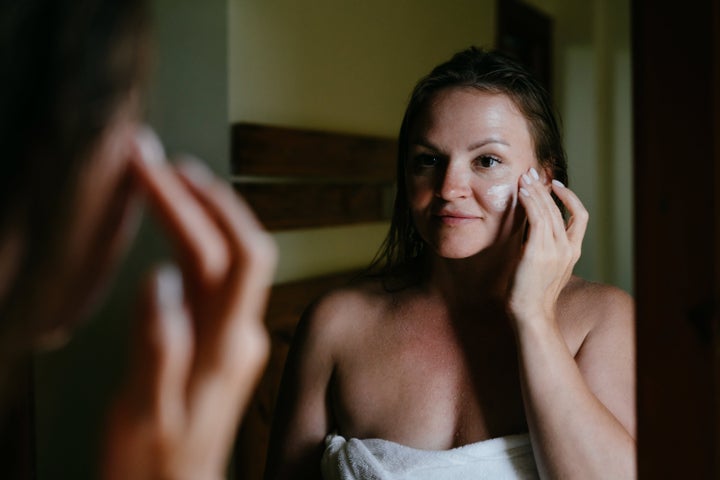
With 32% of us in the UK ‘rarely or never’ using sunscreen, there’s definitely a need for more awareness around how we’re treating our skin.
And while some sun lotion is better than none, you might want to check this one thing on your bottle of sun protection before you apply it.
The expiry date. That’s right, when your sun screen expires is extremely important. You might think that it’s just a way for companies to make us buy more products or it doesn’t really mean much, but in-date SPF has been tested for efficacy and protection levels.
The majority of sunscreens have a shelf life of two to three years, and the best way to check if your product is in date is to check the expiration date on the bottle. If you can’t see a date, the Food and Drug Administration recommends that a sunscreen product should be considered expired three years after purchase.
It’s also worth noting that the longer sunscreen is open, the less effective it will be. Not only can out-of-date sunscreen not offer the same protection, but it can also cause allergic reactions and increase the risk of burning, something some users on TikTok are sharing about.
This mum and son said they got “sunburned so bad” after the mum applied sunscreen to both of their faces that she didn’t realise had expired in March.
And this group of friends ended up with third-degree burns and sun poisoning after using expired sun lotion on a summer day trip.
So, what causes these reactions?
In chemical SPFs, ingredients such as homosalate and oxybenzone will oxidise and become completely ineffective. While this isn’t the case with mineral sunscreens, the ingredients they contain such as zinc oxide and titanium still degrade over time making it essential that you replace your products regularly.
How to avoid expired SPF
The skin experts at Skin Store share their advice…
- Check the date at the top of the bottle
- Check the jar symbol with a lid lifting and the number ‘M’ on it - this will determine how many months the product will last for once opened
- Check the product consistency, colour and smell — if there’s a change in formulation, don’t use it
- Dispose of and replace any unopened SPF or sunscreen products after three years
How should you apply SPF?
- Once you’ve done your morning skin routine, apply SPF onto your body, face and neck, and make sure you’re using protection against both UVA/UVB rays.
- Apply a liberal amount of product across your face and ensure the product covers your whole face, including the nose, eyelids, and lips.
- Remember to use weather apps to monitor UV rays in your area, between 0-2 means sun damage is minimal, and applying SPF once in the morning will be fine.
- However any UV index above three means you must re-apply sunscreen every two hours to protect yourself from the sun.